detail profile teruhiko saig c5 8d

Teruhiko Saigō
今川盛揮
atau dikenal sebagai
Riwayat Hidup
Teruhiko Saigō was a Japanese singer and actor.
As a singer, he was known as one of the three "Gosanke", along with Yukio Hashi and Kazuo Funaki.
The stage name was based on the Meiji Restoration one of three heroes, but also the Kagoshima Local hero Takamori Saigo.
Info Pribadi
Peran Yang Di Mainkan Teruhiko Saigō
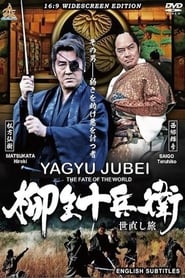 The fate of Tokugawas world hangs...
The fate of Tokugawas world hangs...Yagyu Jubei: The Fate of the World 2015
The fate of Tokugawa’s world hangs in the balance as Yagyu Jubei is sent on a mission to discover what happened to 10 of the shogun’s spies that never returned. Matsukata Hiroki, one of the last surviving members of the Golden Age of Japanese Cinema proves that he has not lost a step as he portrays an older and wiser Yagyu Jubei in a movie that brings the best of samurai filmmaking into the 21st century. Summoned from semi-retirement by Shogun Iemitsu, Jubei is asked to take to the road and investigate a clan rumored to be preparing explosives for a rebellion. With help from a beautiful female ninja they head into the Shirakawa domain where the fighting skills of both are tested time and again as they strive to destroy a conspiracy that could bring a new Warring States Era. In the 1960's Yagyu Jubei was the signature role of the great Konoe Jushiro, father of Matsukata Hiroki. This brings the character full circle.
 From all over Japan the greatest...
From all over Japan the greatest...Kanei Chronicles 1991
From all over Japan, the greatest warriors: Yagyu Jubei, Miyamoto Musashi, Araki Mataemon, and more came to test their blades in a tournament of swords. But behind the match a bloodthirsty plot is born. Tokugawa Yorinobu, a corrupt shogunate official plans to assassinate Shogun Iemitsu and take his place. With scheming samurai Yui Shosetsu and ruthless Negoro ninja leader Genyusai, he plans to incite a ronin uprising and cut a bloody trail across Japan, with terrifying Chinese gunboats to back his play. Matsudaira Izu-no-kami, councilor and friend to the shogun, along with master swordsman Yagyu Jubei and ninja master Hanzo Hattori must stop Yui Shosetsu and his army of ronin and ninja assassins from tearing the country in half and taking over the government!
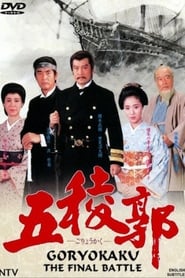 After the fall of the Tokugawa...
After the fall of the Tokugawa...Goryokaku 1988
After the fall of the Tokugawa Shogunate, there was a series of battles fought while the former supporters of the Tokugawa shogunate retreated to the north where they actually started a sovereign nation that was recognized by more than one European country. Survivors of the Shinsengumi were among the followers of Enomoto Takeaki who took them to the northernmost island of Ezo where they fought their final battle at the star shaped fort, Goryokaku. The Japanese Civil Wars fought in the name of the emperor signaled the complete end of the feudal system and Japan’s entry into the modern world as those brave samurai tried to halt progress and learned that the age of modern warfare and weaponry had passed them by. Swords were no match for rifles and cannons, nor was any man a match for the power of the imperial flag. Japanese loyalty to the emperor has long defined the nation and culture despite the changing times.
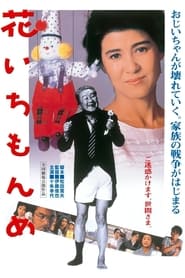 Grandfather Fuyukichi Takano a former university...
Grandfather Fuyukichi Takano a former university...Gray Sunset 1985
Grandfather Fuyukichi Takano, a former university professor, gets fired from his museum job when he is affected by Alzheimer's disease, but his affliction serves to deepen family ties. Japan's submission to the 58th Academy Awards for the Academy Award for Best Foreign Language Film
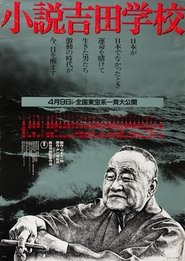 Coinciding with the LDP presidential election...
Coinciding with the LDP presidential election...The Yoshida School 1983
Coinciding with the LDP presidential election of the entire national public, a masterpiece depicting the reverse side of Showa political history released, superimposed cast, a group image of real politicians centered on Shigeru Yoshida and political history after the war.
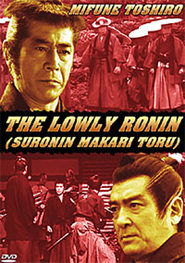 Reprising his role from the popular...
Reprising his role from the popular...Lowly Ronin 1981
Reprising his role from the popular TV series "Koya no Suronin" (The Lowly Ronin), Mifune Toshiro stars in this full-length, stand-alone made for TV movie. The wandering ronin is reminiscent of his most famous role as the samurai without a name in Kurosawa's "Yojimbo" and "Sanjuro". He travels about Japan, and while he may seek happiness, violence and tragedy always cross his path. This time, he reluctantly agrees when a girl hires him to kill a local offical who has unfairly taxed her villagers. But he soon discoves that not all is at it appears when he finds a direct link to his past.
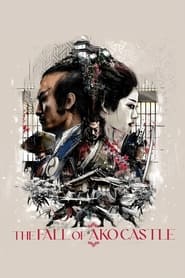 This is the story of The...
This is the story of The...The Fall of Ako Castle 1978
This is the story of "The Forty-Seven Ronin." Based on historical events in 1701-2, the movie tells the tale of the Asano clan's downfall and the revenge of its former samurai on the perpetrator of the catastrophe. Lord Asano was goaded, or tricked, into drawing his sword inside the Shogun's palace -- a crime which carried the death penalty. The newly installed Shogun was furious at Asano and ordered all his clan's assets seized, meaning some 20,000 samurai and commoners were unemployed and landless at a stroke. Forty-seven of these ronin (masterless samurai) banded together to take attempt revenge on Lord Kira, who had goaded Asano into drawing his sword.
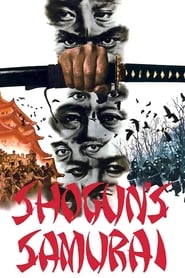 Following the death of the second...
Following the death of the second...Shogun's Samurai 1978
Following the death of the second Tokugawa shogun, it is revealed that he was poisoned by retainers of his son Iemitsu in hopes of gaining him the shogunate despite the stammer and birthmark which undermine his respect. Iemitsu and his brother Tadanaga become bitter rivals for the shogunate, and the land is split into factions, eventually erupting into warfare. Iemitsu's mentor, his fencing instructor Yagyu, is fixated upon securing Iemitsu the shogunate and ends up betraying everyone, even his own family, in pursuit of the goal.
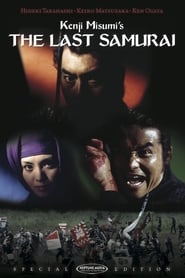 The film follows the story of...
The film follows the story of...The Last Samurai 1974
The film follows the story of Sugi Toranosuke, a ronin, who returns to his home town of Edo many years after his attempted suicide as a sickly child. Rescued and adopted by a master swordsman, he has grown into a master swordsman and a very kind gentleman. The time is around 1868 the year that the nails were finally put into the coffin containing the feudal system that nurtured and sustained the samurai. Sugi is confused and unsure about what is happening but his teacher wants him out of the chaos of the multiple power struggles between the various clans.
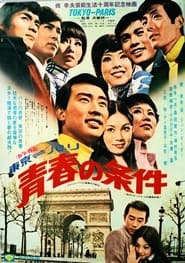 A young composer falls in love...
A young composer falls in love...Rainbow Over Paris 1970
A young composer falls in love with the beautiful daughter of a wealthy company president and flies to Paris when he learns she is studying music there. But, when he finally wins her after many difficulties, he somehow feels empty, because his spirit has always been aroused against barriers before him.
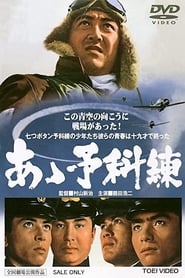 The film is dedicated to the...
The film is dedicated to the...The Young Eagles of the Kamikaze 1968
The film is dedicated to the souls of flight school graduates killed in World War II. Young boys dream about becoming pilots and apply to flight schools. However, the flight schools have extremely demanding, harsh training, and once they finally become pilots, they must become suicide bombers and give their lives for their homeland.
 Kaori a professional thirtysomething caught between...
Kaori a professional thirtysomething caught between...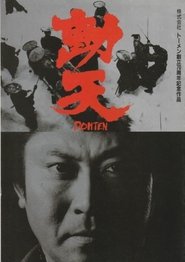 Jubei is a Japanese merchant who...
Jubei is a Japanese merchant who...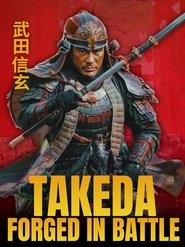 During the 16th century Japan was...
During the 16th century Japan was...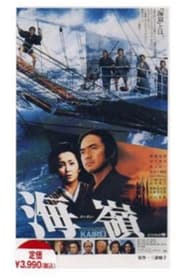 The Story of the three Japanese...
The Story of the three Japanese...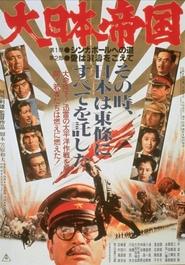 Story of three people a barber...
Story of three people a barber... About Soviet and Japanese volleyball players...
About Soviet and Japanese volleyball players...